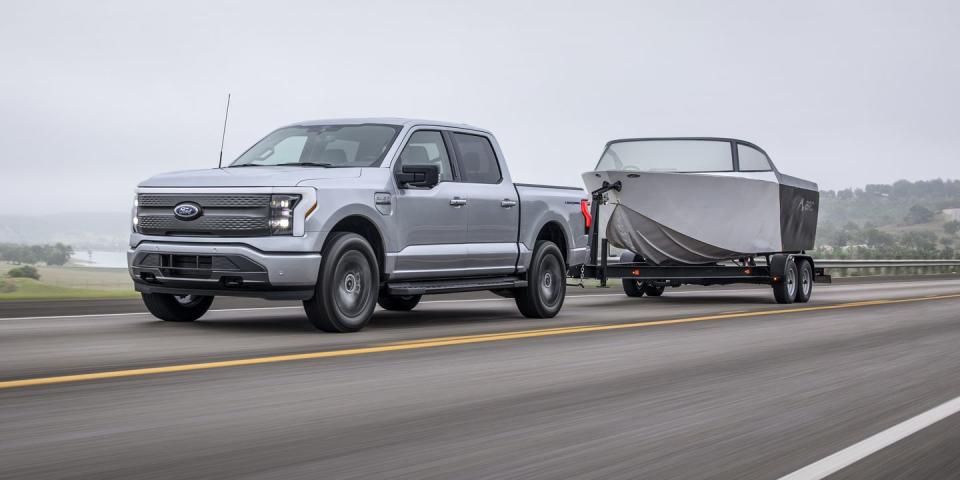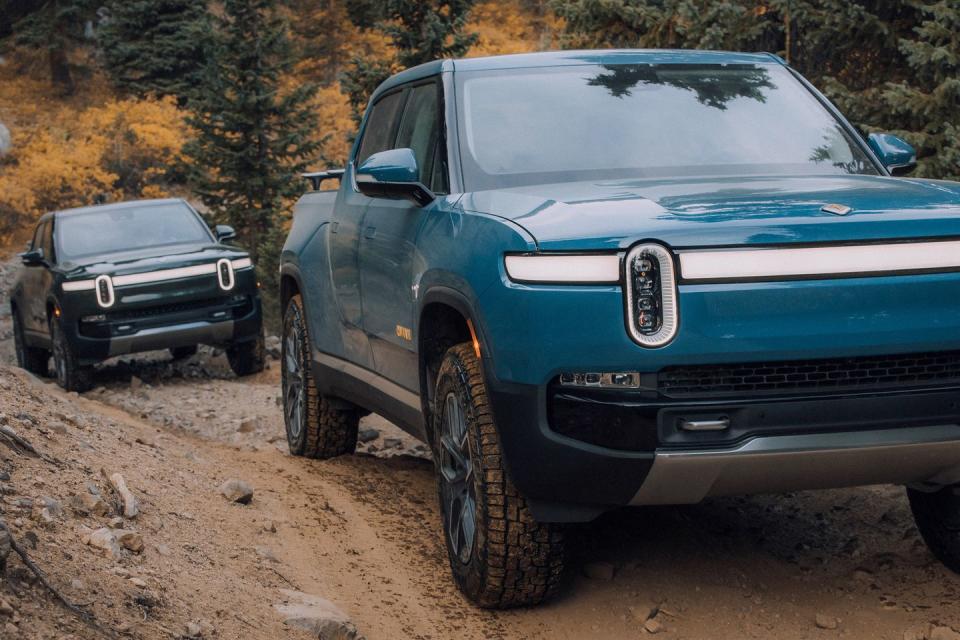Why Midsize EV Pickup Trucks Are the Next Big Thing

Whatever the size of an all-electric pickup truck, its towing capacity could prove troublesome.
In a recent test of a Ford F-150 Lightning (pictured above) pulling a 23-foot Airstream trailer, the pickup lost about half its range, according to Electrek.
If electric self-propelled trailers catch on, the size of your tow vehicle may not matter very much.
Suburban cowboys and cowgirls have embraced the bloating of full-size pickup trucks for the last quarter century. Modern “mid-size” trucks such as the Ford Ranger and Chevrolet Colorado/GMC Canyon are closer in size to the Ford F-150s and Silverado/Sierras of the late 1990s.
Intentionally or not, the EPA’s “footprint” formula, which ties a vehicle’s wheelbase length and track width to its required fuel-economy improvement, gives automakers an advantage to selling more full-size trucks than midsize trucks ahead of the federal 49-mpg 2026 Corporate Average Fuel Economy standard.
But the footprint rule is basically moot if automakers sell a sufficient number of battery electric-powered pickups.
The all-electric F-150 Lightning 4WD’s 76/61 city/highway mpg-e EPA rating moves the big truck to the plus-side as Ford Motor calculates its overall standing with CAFE 2026. Same is true for the extended-range version of the F-150 Lightning (at 78/63 mpg-e) as well as the Platinum 4WD variant (73/60 mpg-e).
The Lightning is 232.7 inches long on a 145.5-inch wheelbase, and 83.6 inches tall. The Rivian R1T is 217.1 inches long on a 135.8-inch wheelbase, and 78.2 inches tall, and yet its 74/66 mpg-e EPA estimates are topped in city driving by the much-larger Lightning. Range is similar: 230-320 miles for the Lightning, versus 314 miles for the R1T, while the Rivian’s maximum towing capability is 11,000 pounds, 1,000 pounds better than the Ford’s max.


 Yahoo Autos
Yahoo Autos 